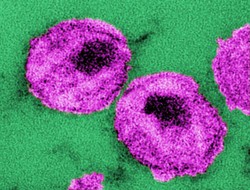The use of antiretroviral therapy has been beneficial in the treatment of patients who have HIV infection. Research also shows that these agents may serve to prevent acquisition of the infection especially when there is continuous exposure to the virus. These may include babies who are at risk for acquisition during delivery or when their mothers breastfeed [1].

HIV Prevention Methods
There is much research on methods to lower the occurrence of human immunodeficiency virus (HIV) infection.
Perinatal Exposure
The pregnant woman will take antiretroviral agents to prevent mother-to-child transmission, but she must use agents which will not harm the fetus. This may compromise the quality of drugs to treat her own infection with HIV, but teratogenic compounds will, of course, present a contraindication for their use during gestation. Naturally, these scenarios will pose a perinatal exposure of the virus to the baby, and she will take antiretrovirals before and after delivery [1].
Pre-and post-exposure prophylaxis are approaches to protect seronegative patients from acquisition of the disease, and they are not synonymous with treatment as prevention. Treatment as prevention is the use of these drugs in individuals who are seropositive, and their degree of infectiousness declines as a result. This lessens the possibility that their seronegative sexual partners will subsequently acquire the disease [2].
Serodiscordant Relationships
Serodiscordant relationships will, of course, present an ongoing exposure of the virus to the seronegative partner [1]. Studies in East Africa suggest that the use of one percent tenofovir vaginal gel as pre-exposure prophylaxis may reduce the occurrence of this medical condition in the seronegative sexual partner. It is also possible to administer oral tenofovir with or without emtricitabine by mouth for pre-exposure prophylaxis [1].
In all of these clinical trials, the subjects received education about other methods to prevent the disease through behavior change such as condom use and monogamous relationships. The research examined the partners’ compliance with those behavioral approaches. The investigators also observed that adherence to the antiretroviral regimen exerted an influence on the success of pre-exposure prophylaxis [1].
In order to document the patients’ adherence to the drug regimen, the researchers suggested the use of pill counts and visits to the home without advance notice [1]. Adherence to the medication plan was better in couples who maintained communication, trust, and mutual support than in those who did not [1].
The effectiveness of pre-exposure prophylaxis as a function of medication adherence applies to heterosexual couples as well as men who have sex with men [1].
Conclusion
Though clinical trials with antiretroviral agents may yield a variety of results, these studies continue to provide useful information for the control of HIV infection.
References
- Baeten, J., Donnell, D., Ndase, P. et al. (2012). Antiretroviral prophylaxis for HIV prevention in heterosexual men and women. New England Journal of Medicine, 367, 399-410.
- Mayer, K. and Venkatesh, K. (2010). Antiretroviral therapy as HIV prevention: Status and prospects. American Journal of Public Health, 100, 1867-1876.
- The photograph is a thin-section transmission electron micrograph of several human immunodeficiency virus particles. Reprinted with permission from Centers for Disease Control/Dr. A. Harrison/Dr. P. Feorino.
Disclaimer
The information contained in this article is for educational purposes only and should not be used for diagnosis or to guide treatment without the opinion of a health professional. Any reader who is concerned about his or her health should contact their physician for advice.
You might also like
How to React to and Help a Loved One with CancerDealing with cancer? Learn how to react, treat and care for a loved one when ...
Do You Have Your Own Cure For Cancer?Is it possible you might be completely unaware of the cancer cure, a natural ...



 The Reality of Aspirinon 05/24/2021
The Reality of Aspirinon 05/24/2021
 An Old Microbeon 03/31/2021
An Old Microbeon 03/31/2021
 Coronavirus and Mental Illnesson 02/14/2021
Coronavirus and Mental Illnesson 02/14/2021
 Acute Ischemic Strokeon 12/25/2020
Acute Ischemic Strokeon 12/25/2020


Comments